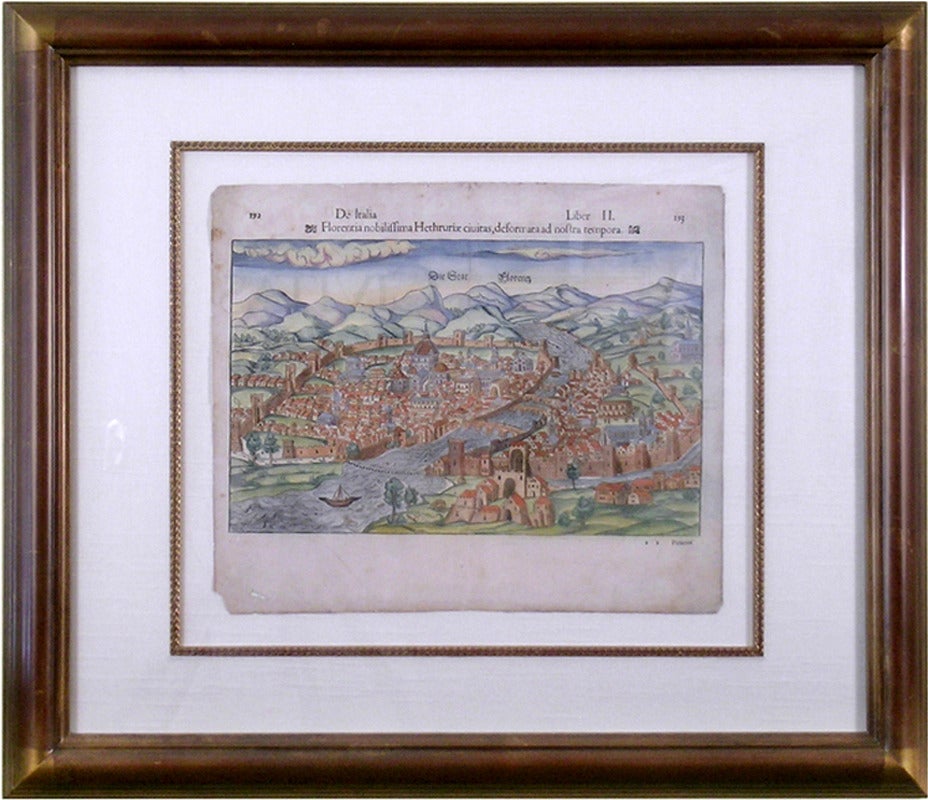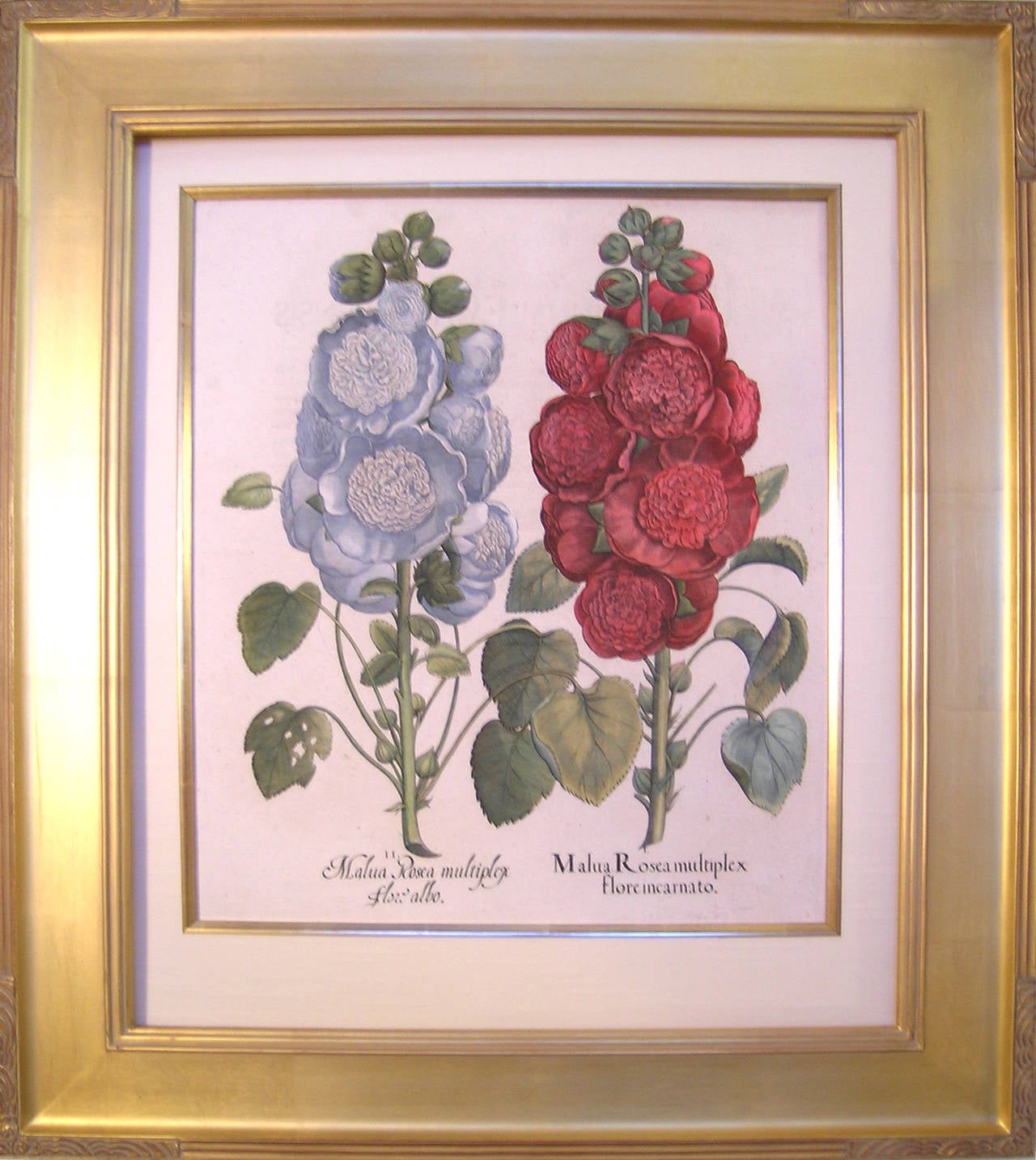Dr. Robert John ThorntonDragon Arum1812
1812
About the Item
- Creator:Dr. Robert John Thornton (1768 - 1837, English)
- Creation Year:1812
- Dimensions:Height: 25 in (63.5 cm)Width: 21.25 in (53.98 cm)Depth: 1.25 in (3.18 cm)
- Medium:
- Movement & Style:
- Period:
- Condition:Clean, crisp image. Full margins. Beautiful original color.
- Gallery Location:Florham Park, NJ
- Reference Number:
Dr. Robert John Thornton
- ShippingRetrieving quote...Ships From: Florham Park, NJ
- Return PolicyA return for this item may be initiated within 1 day of delivery.
- Pears LXXXIIBy George BrookshawLocated in Florham Park, NJGEORGE BROOKSHAW (1751 – 1823). Pomona Britannica of a Collection of the Most Esteemed Fruits…. Engravers R. Brookshaw and H. Merke. London, 1812. Aquatint and stipple engravings...Category
Early 19th Century Academic Prints and Multiples
MaterialsArchival Paper, Archival Tape, Handmade Paper, Plexiglass, Rag Paper, Si...
- De Italia Florentia. (Florence, Italy)By Sebastian MünsterLocated in Florham Park, NJSebastian Munster (1488-1552) Cosmographia Basel, 1579 ca Woodcut. Later Hand-Color. Munster's Cosmographia was one of the most influential wo...Category
18th Century and Earlier Academic Prints and Multiples
MaterialsArchival Paper, Watercolor, Silk, Rag Paper, Plexiglass, Handmade Paper,...
- Peaches XXXIVBy George BrookshawLocated in Florham Park, NJGEORGE BROOKSHAW (1751 – 1823). Pomona Britannica of a Collection of the Most Esteemed Fruits…. Engravers R. Brookshaw and H. Merke. London, 1812. Aquatint and stipple engravings...Category
Early 19th Century Academic Prints and Multiples
MaterialsArchival Paper, Watercolor, Archival Tape, Gesso, Handmade Paper, Plexig...
- Malva Rosea (Hollyhock, Mallow)By Basilius BeslerLocated in Florham Park, NJThis piece would pair well with Basil Besler's "Malva hortensis flore..." which is also listed BASIL BESLER (1561 – 1629). Hortus Eystettensis. Konrad ...Category
18th Century and Earlier Academic Prints and Multiples
MaterialsArchival Paper, Watercolor, Archival Tape, Gesso, Handmade Paper, Laid P...
- Malva hortensis flore... (Hollyhock, Mallow)By Basilius BeslerLocated in Florham Park, NJThis piece would pair well with Basil Besler's "Malva Rose" which is also listed. BASIL BESLER (1561 – 1629). Hortus Eystettensis. Konrad Bauer. Altdo...Category
18th Century and Earlier Academic Prints and Multiples
MaterialsSilk, Archival Paper, Archival Tape, Gesso, Handmade Paper, Laid Paper, ...
- Purple Grapes.By Maria Sibylla MerianLocated in Florham Park, NJThis piece would pair well with Maria Sibylla Merian's "Green Grapes; which is also listed. MARIA SIBYLLA MERIAN (1647-1717) Metamorphosis Insectorum Surinamensium… (Insects of Su...Category
18th Century and Earlier Academic Prints and Multiples
MaterialsSilk, Archival Paper, Archival Tape, Gesso, Handmade Paper, Laid Paper, ...
- Color-Blast BouquetBy Dionisios FragiasLocated in New York, NYDionisios Fragias is a New York -based artist born on the Greek island of Kefalonia and raised in New York City. He is the protege of the artist Jeff Koons whose years-long mentorshi...Category
2010s Abstract Abstract Prints
MaterialsArchival Tape, Archival Ink, Archival Paper, Color, Archival Pigment
- Dear One Threads A Cocoon - Unique Hand-coloured Print in Walnut frameLocated in London, GBHand-coloured portrait of a human larvae bursting out of their cocoon, immobilised in marble. Representative of a safe and isolating space, the cocoon is both a cage and a shelter. This tale is a study of transformation, of breaking apart and coming back together as the larvae emerges from the silken threads. Taken from The Sialia Marbles, a series of portraits containing ephemeral human sculptures taken between 2016-19. Together these works act as tales contained in a fictional sculpture hall, in direct reaction to Andre Malraux’s 1947 Le Musee Imaginaire (Museum Without Walls). During the beginning of the 'Museum Age' in the 18th century , writer Johann Wolfgang Von Goethe discussed mythical sculpture...Category
18th Century Other Art Style Figurative Photography
MaterialsCotton, Archival Pigment, Pigment, Giclée, Black and White, Walnut, Pain...
- Hand-coloured Print of weeping mythical sculpture angels in Walnut FrameLocated in London, GBHand-coloured tableau of a weeping spirit and her guardians, immobilised in marble. A disjointed narrative looking at recovery and protection, the angels shield the spirit with tender embraces and cry for her when alone. Taken from The Sialia Marbles, a series of portraits containing ephemeral human sculptures taken between 2016-19. Together these works act as tales contained in a fictional sculpture hall, in direct reaction to Andre Malraux’s 1947 Le Musee Imaginaire (Museum Without Walls). During the beginning of the 'Museum Age' in the 18th century , writer Johann Wolfgang Von Goethe discussed mythical...Category
18th Century Victorian Nude Photography
MaterialsCotton, Archival Pigment, Pigment, Color, Walnut, Paint, Photographic Fi...
- Cleansing A Shrike/ Blackbird's Bath - Hand coloured Print in Walnut frameLocated in London, GBHand-coloured portrait of a bird-like spirit, immobilised in marble, cleansing in a spring-time bath. A character formed from Naiads (a Greek nymph of flowing water), and exploring the idea of a ritualistic cleansing to wash away sombre deeds. Taken from The Sialia Marbles, a series of portraits containing ephemeral human sculptures taken between 2016-19. Together these works act as tales contained in a fictional sculpture hall, in direct reaction to Andre Malraux’s 1947 Le Musee Imaginaire (Museum Without Walls). During the beginning of the 'Museum Age' in the 18th century , writer Johann Wolfgang Von Goethe discussed mythical sculpture...Category
21st Century and Contemporary Victorian Nude Photography
MaterialsWalnut, Archival Pigment, Color, Paint, Ink, Spray Paint, Watercolor, Ar...
- “Paris-London”Located in Southampton, NYVery nice original hand colored copper plate etching (aquatint) by the Hungarian born artist, Marianne L. Almasy. Depicts London with its double buses in the foreground and scenes o...Category
1980s Academic Landscape Prints
MaterialsEtching, Archival Paper
- “Flower Seller, Notre Dame”Located in Southampton, NYVery nice original hand colored copper plate etching (aquatint) by the Hungarian born artist, Marianne L. Almasy. Depicts a Parisian flower girl selling her bouquets with the iconic...Category
1980s Academic Landscape Prints
MaterialsEtching, Archival Paper






